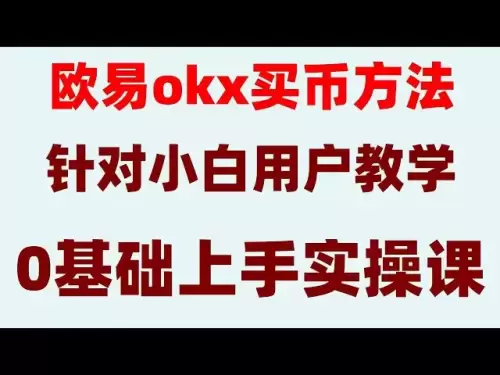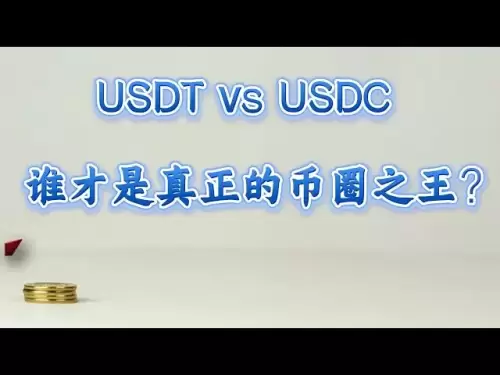-
 Bitcoin
Bitcoin $111,350.6129
2.52% -
 Ethereum
Ethereum $2,638.3695
5.10% -
 Tether USDt
Tether USDt $1.0000
-0.05% -
 XRP
XRP $2.4235
1.40% -
 BNB
BNB $681.1764
1.45% -
 Solana
Solana $177.9352
4.00% -
 USDC
USDC $0.9998
0.01% -
 Dogecoin
Dogecoin $0.2394
3.97% -
 Cardano
Cardano $0.8021
5.36% -
 TRON
TRON $0.2758
3.25% -
 Sui
Sui $3.8652
-1.21% -
 Hyperliquid
Hyperliquid $32.8241
17.04% -
 Chainlink
Chainlink $16.6651
4.39% -
 Avalanche
Avalanche $25.1059
9.72% -
 Stellar
Stellar $0.3029
3.99% -
 Shiba Inu
Shiba Inu $0.0...01522
3.20% -
 Bitcoin Cash
Bitcoin Cash $436.3699
7.46% -
 Hedera
Hedera $0.2050
4.05% -
 UNUS SED LEO
UNUS SED LEO $8.8681
0.29% -
 Toncoin
Toncoin $3.1558
2.61% -
 Polkadot
Polkadot $4.9039
3.11% -
 Litecoin
Litecoin $99.8009
3.60% -
 Monero
Monero $398.6334
2.16% -
 Bitget Token
Bitget Token $5.1932
-0.32% -
 Pepe
Pepe $0.0...01426
5.92% -
 Pi
Pi $0.8170
-1.65% -
 Dai
Dai $1.0000
0.03% -
 Ethena USDe
Ethena USDe $1.0005
-0.02% -
 Bittensor
Bittensor $469.6207
6.76% -
 Uniswap
Uniswap $6.3850
3.55%
Is DMI effective in the late trading raid? Is the sudden change of DMI before the closing credible?
DMI can be useful in late trading raids, but its effectiveness depends on market volatility and time frames; always confirm signals with other indicators.
May 22, 2025 at 11:07 pm
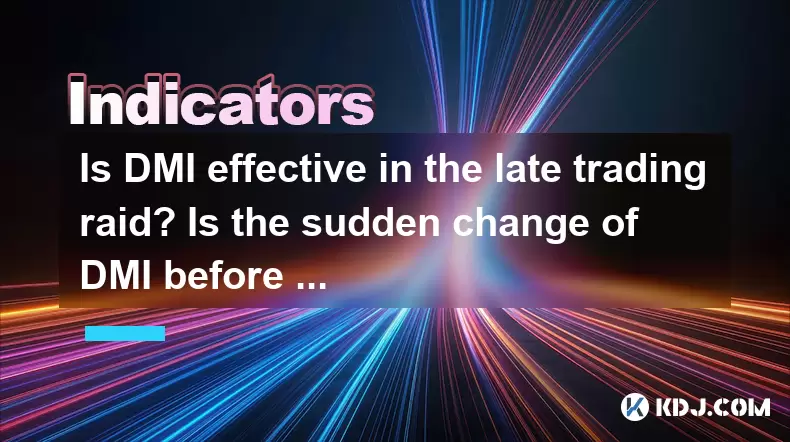
Understanding DMI in Cryptocurrency Trading
Directional Movement Index (DMI), often referred to simply as DMI, is a technical analysis tool used by traders to assess the strength and direction of a price trend. In the context of cryptocurrency trading, DMI can be particularly useful for identifying potential entry and exit points. The DMI consists of three lines: the Positive Directional Indicator (+DI), the Negative Directional Indicator (-DI), and the Average Directional Index (ADX). The +DI measures the upward movement, the -DI measures the downward movement, and the ADX indicates the strength of the trend.
DMI's Role in Late Trading Raids
Late trading raids refer to the sudden price movements that occur towards the end of a trading session. These movements can be driven by various factors, including news releases, large trades, or market manipulation. The question of whether DMI is effective in these scenarios hinges on its ability to provide reliable signals during these volatile periods.
When it comes to late trading raids, DMI's effectiveness depends on several factors. Firstly, the volatility of the market can lead to false signals. If the market is highly volatile, the DMI lines might cross frequently, leading to confusion and potentially incorrect trading decisions. Secondly, the time frame used for the DMI can affect its reliability. Shorter time frames might capture more immediate movements but can also be more susceptible to noise and less reliable in predicting sustained trends.
Analyzing DMI's Sudden Changes Before Closing
The sudden changes in DMI before the closing of a trading session can be both credible and misleading. These changes can be influenced by several factors, including last-minute trades and news releases. When DMI lines cross or the ADX spikes suddenly, it might signal a strong trend or a reversal. However, traders need to consider the context and corroborate these signals with other indicators.
For instance, if the +DI crosses above the -DI just before the closing, it might suggest a bullish trend. However, if this change is not supported by other indicators like volume or other momentum indicators, it might be a false signal. Similarly, a sudden increase in the ADX might indicate a strengthening trend, but traders should be cautious and look for confirmation from other sources.
Practical Application of DMI in Late Trading Raids
To effectively use DMI during late trading raids, traders need to follow a structured approach. Here's how you can apply DMI in such scenarios:
- Monitor the DMI lines closely: Pay attention to the crossings of the +DI and -DI lines. A crossover can indicate a potential trend change.
- Check the ADX value: If the ADX is above 25, it suggests a strong trend. If it's below 20, the trend might be weak, and the DMI signals might be less reliable.
- Use other indicators for confirmation: Combine DMI with other indicators like the Relative Strength Index (RSI) or Moving Averages to confirm the signals.
- Be cautious of volatility: In highly volatile markets, DMI signals might be less reliable. Consider using a longer time frame to filter out noise.
Case Studies: DMI in Action During Late Trading Raids
To better understand DMI's effectiveness in late trading raids, let's look at a couple of case studies. In one instance, a late trading raid occurred in Bitcoin (BTC) just before the closing of a trading session. The +DI crossed above the -DI, and the ADX spiked to 30, suggesting a strong bullish trend. Traders who entered based on this signal saw a significant price increase in the following session. However, this signal was also supported by a surge in trading volume and positive news about Bitcoin adoption.
In another case, a late trading raid in Ethereum (ETH) saw the -DI cross above the +DI, indicating a potential bearish trend. The ADX was at 28, suggesting a strong trend. However, this signal was not supported by other indicators, and the price quickly reversed in the next session. This example highlights the importance of using DMI in conjunction with other indicators to avoid false signals.
Limitations and Considerations
While DMI can be a valuable tool in late trading raids, it has its limitations. Firstly, DMI is a lagging indicator, meaning it reacts to price changes rather than predicting them. This can lead to delayed signals during fast-moving markets. Secondly, DMI works best in trending markets. In sideways or choppy markets, the DMI signals might be less reliable.
Traders should also consider the overall market sentiment and external factors that might influence late trading raids. For instance, regulatory news, macroeconomic events, or large institutional trades can significantly impact the market and potentially skew DMI signals.
Frequently Asked Questions
Q: Can DMI be used effectively in all cryptocurrency markets?
A: DMI's effectiveness can vary depending on the specific cryptocurrency and market conditions. It works best in markets with clear trends and might be less reliable in highly volatile or sideways markets. Traders should always consider the specific characteristics of the cryptocurrency they are trading.
Q: How often should I check DMI signals during late trading raids?
A: During late trading raids, it's advisable to monitor DMI signals closely, especially in the last 30 minutes of the trading session. However, frequent checking might lead to overtrading and reacting to false signals. A balanced approach, combining DMI with other indicators and market analysis, is recommended.
Q: Is it better to use DMI on shorter or longer time frames during late trading raids?
A: The choice of time frame depends on your trading strategy. Shorter time frames can capture immediate movements but might be more susceptible to noise. Longer time frames can provide more reliable signals but might miss out on quick opportunities. A combination of both can be useful, using shorter time frames for entry and longer ones for trend confirmation.
Q: Can DMI signals be used to predict late trading raids?
A: DMI is a lagging indicator and cannot predict late trading raids. It can, however, help traders identify potential trends and make informed decisions during these events. For predictive analysis, traders might need to combine DMI with leading indicators or market sentiment analysis.
Disclaimer:info@kdj.com
The information provided is not trading advice. kdj.com does not assume any responsibility for any investments made based on the information provided in this article. Cryptocurrencies are highly volatile and it is highly recommended that you invest with caution after thorough research!
If you believe that the content used on this website infringes your copyright, please contact us immediately (info@kdj.com) and we will delete it promptly.
- Bitcoin Pizza Day: 15 Years of the First Real-World Cryptocurrency Purchase
- 2025-05-23 03:40:13
- Ledger Unveils a Special Edition Flex Device Designed Specifically for Solana
- 2025-05-23 03:40:13
- FloppyPepe (FPPE) Is Extending Its Institutional Era As Global Banks Quietly Flip The Ledger Switch
- 2025-05-23 03:35:13
- As the digital asset market matures in 2025, attention is shifting from loud speculation to quiet yet powerful fundamentals.
- 2025-05-23 03:35:13
- XRP (XRP) Price Prediction: Will the Token Finally Reflect the Broader Bullish Tone?
- 2025-05-23 03:30:13
- Cardano (ADA) Continues to Emphasize Governance and Decentralization
- 2025-05-23 03:30:13
Related knowledge
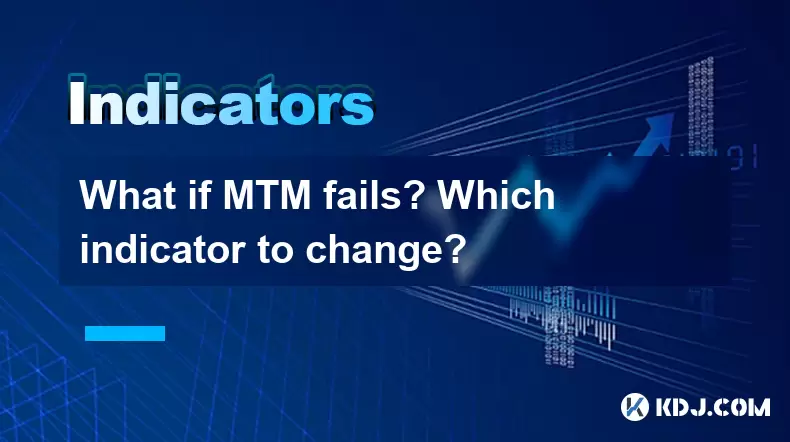
What if MTM fails? Which indicator to change?
May 23,2025 at 12:35am
Understanding MTM and Its ImportanceMoney Transfer Mechanism (MTM) is a critical component in the world of cryptocurrencies, especially when it comes to facilitating transactions between different parties. MTM ensures that funds move securely and efficiently from one wallet to another. However, like any system, MTM can sometimes fail, leading to delays,...
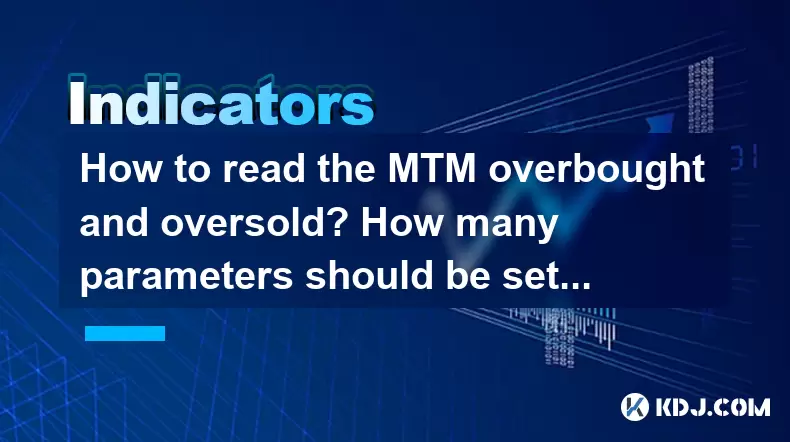
How to read the MTM overbought and oversold? How many parameters should be set?
May 23,2025 at 12:01am
Introduction to MTM IndicatorThe Money Flow Index (MFI), commonly referred to as the MTM (Money Flow Multiplier), is a momentum indicator that measures the strength of money flowing in and out of a security. It is similar to the Relative Strength Index (RSI) but incorporates volume, making it a more comprehensive tool for traders in the cryptocurrency m...
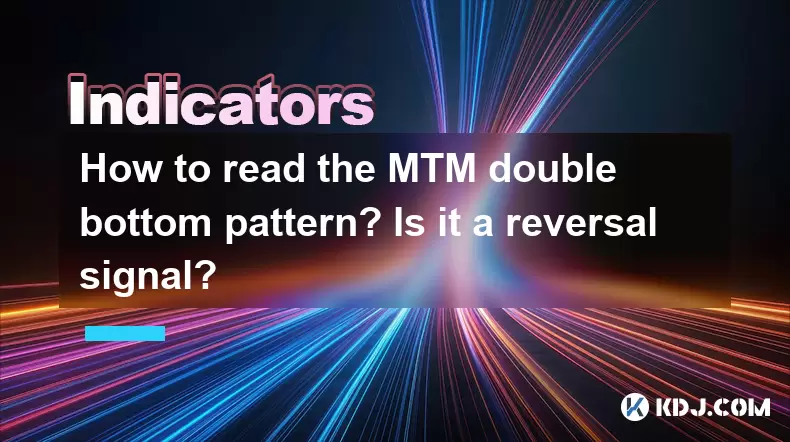
How to read the MTM double bottom pattern? Is it a reversal signal?
May 23,2025 at 03:21am
The MTM double bottom pattern is a technical analysis tool used by cryptocurrency traders to identify potential reversal points in a market trend. This pattern is particularly significant because it can signal a shift from a bearish to a bullish market, providing traders with opportunities to enter long positions. To understand and effectively read the ...

Is DMI effective in the late trading raid? Is the sudden change of DMI before the closing credible?
May 22,2025 at 11:07pm
Understanding DMI in Cryptocurrency TradingDirectional Movement Index (DMI), often referred to simply as DMI, is a technical analysis tool used by traders to assess the strength and direction of a price trend. In the context of cryptocurrency trading, DMI can be particularly useful for identifying potential entry and exit points. The DMI consists of thr...

How to use DMI in the gap position? Is the DMI signal effective after the gap?
May 23,2025 at 02:15am
Understanding DMI and Gap PositionsThe Directional Movement Index (DMI) is a technical analysis tool used by traders to assess the strength and direction of a price trend. It consists of three lines: the Positive Directional Indicator (+DI), the Negative Directional Indicator (-DI), and the Average Directional Index (ADX). The DMI is particularly useful...
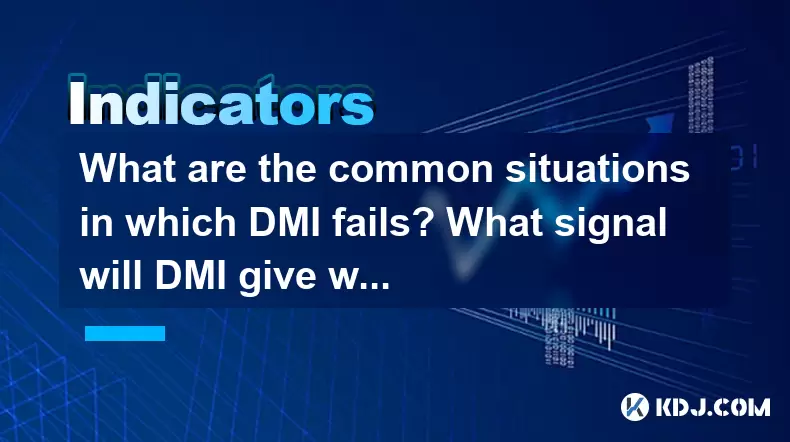
What are the common situations in which DMI fails? What signal will DMI give when there is a false breakthrough?
May 22,2025 at 11:49pm
The Directional Movement Index (DMI) is a popular technical analysis indicator used by traders in the cryptocurrency market to determine the strength of a trend and potential trading opportunities. However, like all technical indicators, the DMI is not infallible and can sometimes fail to provide accurate signals. This article will explore common situat...

What if MTM fails? Which indicator to change?
May 23,2025 at 12:35am
Understanding MTM and Its ImportanceMoney Transfer Mechanism (MTM) is a critical component in the world of cryptocurrencies, especially when it comes to facilitating transactions between different parties. MTM ensures that funds move securely and efficiently from one wallet to another. However, like any system, MTM can sometimes fail, leading to delays,...

How to read the MTM overbought and oversold? How many parameters should be set?
May 23,2025 at 12:01am
Introduction to MTM IndicatorThe Money Flow Index (MFI), commonly referred to as the MTM (Money Flow Multiplier), is a momentum indicator that measures the strength of money flowing in and out of a security. It is similar to the Relative Strength Index (RSI) but incorporates volume, making it a more comprehensive tool for traders in the cryptocurrency m...

How to read the MTM double bottom pattern? Is it a reversal signal?
May 23,2025 at 03:21am
The MTM double bottom pattern is a technical analysis tool used by cryptocurrency traders to identify potential reversal points in a market trend. This pattern is particularly significant because it can signal a shift from a bearish to a bullish market, providing traders with opportunities to enter long positions. To understand and effectively read the ...

Is DMI effective in the late trading raid? Is the sudden change of DMI before the closing credible?
May 22,2025 at 11:07pm
Understanding DMI in Cryptocurrency TradingDirectional Movement Index (DMI), often referred to simply as DMI, is a technical analysis tool used by traders to assess the strength and direction of a price trend. In the context of cryptocurrency trading, DMI can be particularly useful for identifying potential entry and exit points. The DMI consists of thr...

How to use DMI in the gap position? Is the DMI signal effective after the gap?
May 23,2025 at 02:15am
Understanding DMI and Gap PositionsThe Directional Movement Index (DMI) is a technical analysis tool used by traders to assess the strength and direction of a price trend. It consists of three lines: the Positive Directional Indicator (+DI), the Negative Directional Indicator (-DI), and the Average Directional Index (ADX). The DMI is particularly useful...

What are the common situations in which DMI fails? What signal will DMI give when there is a false breakthrough?
May 22,2025 at 11:49pm
The Directional Movement Index (DMI) is a popular technical analysis indicator used by traders in the cryptocurrency market to determine the strength of a trend and potential trading opportunities. However, like all technical indicators, the DMI is not infallible and can sometimes fail to provide accurate signals. This article will explore common situat...
See all articles






















